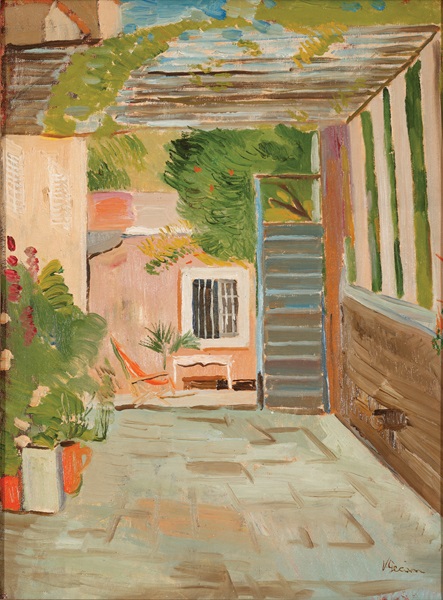
Museum Employee Accidentally Discards Artwork, Mistaking it for Trash

## Tech Worker Mistakenly Discards Priceless Art: A Lesson in Disguise?
A shocking yet oddly humorous event occurred at the privately funded **LAM Museum** in Lisse, Netherlands, when a substitute elevator technician mistakenly discarded a priceless artwork by French artist **Alexandre Lavet**. The misleadingly simple sculptures, which were aluminum replicas of beer cans, were thrown away—but miraculously recovered just before they could meet their final destination in the trash.
### The Art Behind the Error
The sculptures in question, titled **“All the good times we spent together”** (2017), are acrylic-painted aluminum replicas of popular **Jupiler beer cans**, carefully designed to serve as symbolic reminders of cherished memories shared between friends. These innocuous-looking cans were part of a clever installation within the museum. They were placed atop a **transparent glass elevator**—a spot where they could either be viewed from above while visitors walked by the elevator, or from below through the clear ceiling.
However, to an untrained eye, these art pieces easily resemble common litter. That’s precisely what happened when the substitute technician, understandably unfamiliar with the museum’s unconventional art placement, assumed they were remnants left by either construction workers or neglected by visitors. In an attempt to clean up, he threw the cans away, unknowingly discarding a piece of contemporary art.
### A Quick Save
Museum staff were the first to notice the absence of the cans. Upon realizing that a mistake had been made, **Curator Elisah van den Bergh** quickly located the discarded cans in an unsuspicious **bin bag**, mixed with some other litter that had been swept up casually. Fortunately, this miracle of salvage happened before the trash was permanently removed from the site.
The museum’s response to the incident was one of understanding and forgiveness. Rather than placing blame, the institution expressed its sympathy toward the well-meaning substitute worker. “He was just doing his job in good faith,” said **Sietske van Zanten**, the museum’s Director. They aimed to make it clear that no ill will was harbored against the man, as it was a simple and honest mistake.
### A Testament to the Power of Art
Interestingly, museum director van Zanten commented on how this incident underscores the very success of Lavet’s work. **“In a way, it’s a testament to the effectiveness of Alexandre Lavet’s art,”** she said in a statement to the art-focused journal **Hyperallergic**. What van Zanten alludes to is Lavet’s skill in transforming everyday, mundane objects into objects of artistic significance. The quiet power of the beer cans lay in their ability to blend so seamlessly with the environment—and their casual discardment may be seen as proof of their genuine imitation of life.
### The LAM Museum’s Unique Approach
The LAM Museum, known for its **food and drink-themed contemporary art**, has built a reputation not only for its thematic focus but also for its unorthodox display approach. Artworks in the museum can be found in surprising, sometimes obscure locations, which challenge the traditional roles of gallery spaces and pedestals. This helps museum-goers experience familiar, everyday items—from food packaging to drink cans—in completely new contexts.
“We strive to disrupt habitual perceptions and invite viewers to see the ordinary in an extraordinary new light,” commented van Zanten, underscoring the museum’s mission and its playful approach toward colocating art with real-life spaces. Visitors are continuously kept on their toes by discovering works displayed in unexpected areas, which are designed to encourage deeper reflection on the shapes and forms of common objects.
### What Now for the Art?
After its near-disappearance, Lavet’s beer can artwork was cleaned and quickly restored. It is currently displayed on a **pedestal in the museum lobby**, ensuring it won’t get accidentally discarded again—at least, not for the foreseeable future. Nevertheless, keeping with the LAM Museum’s philosophy of unpredictability, the artwork will eventually be moved back to a subtly different, less predictable spot, encouraging future visitors to engage with its environmental context more thoughtfully.
The recovery of Lavet’s cans serves as a gentle reminder that art can sometimes appear where you least expect it—and that one man’s trash is, quite literally, another man’s treasure.
—
### The Bottom Line: What Can We Learn?
This incident shines a light on several crucial facets of contemporary art and museum curation:
1. **Art as Everyday Objects:** Lavet’s work demonstrates the artistic value of ordinary items, encouraging viewers to draw emotional connections from simple, often overlooked objects in daily life.
2. **Context is Key:** The placement of art plays a critical role in how it’s perceived. In unconventional museums like LAM, displaying items in surprising locations invites audiences to question assumptions about what is (and isn’t) art.
3. **Human Error in a World of Art:** Sometimes, accidents happen whether in life